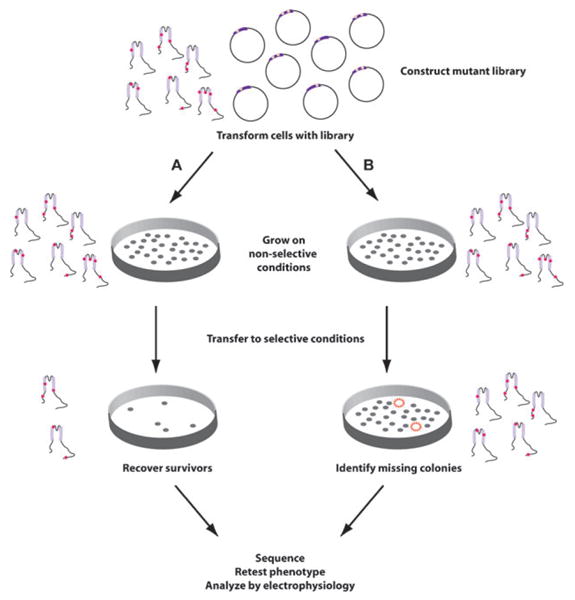Fig. 1.

Schematic for selection of functional channels from mutant libraries. Top, depicts a collection of mutants of a two-transmembrane domain channel subunit encoded by plasmids. Path A shows the procedure when functional channels confer rescue under selective conditions. The library is first plated onto non-selective conditions. Under these conditions, channel function is not required for survival. After colonies are established they are replica-plated onto plates that have selective conditions in which channel activity is required for survival. All non-functional clones are lost at this step and only functional mutants remain. Path B shows the outcome when functional channels confer a lethal phenotype. In this case, all colonies survive the non-selective conditions, but only those colonies expressing active channels die on the selective plates (indicated by the red dashed circles). In both cases, recovery of the plasmid, retesting to verify phenotype, DNA sequencing to identify the mutations, and subsequent characterization by electrophysiological studies are essential.
